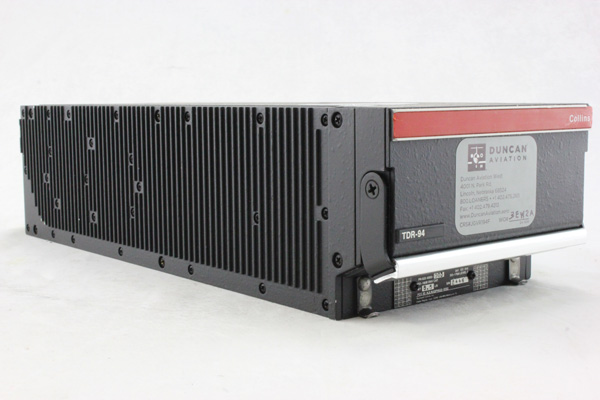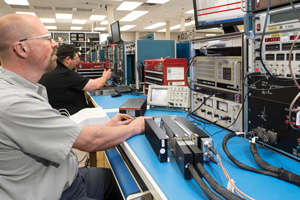
Duncan Aviation was recently approved by Rockwell Collins as an authorized service provider for repair, service, and modification of TDR-94 and TDR-94D transponders. This transponder is a solid-state, crystal-controlled receiver/transmitter specifically designed for TCAS II-equipped business aircraft. The units can be upgraded and when professionally installed and certified will meet the upcoming ADS-B mandate for 2020.
“We have been servicing the -003 TDR-94 transponders for several years and are able to offer customers excellent turntimes,” says Kevin Miesbach, Components/OEM New Business Development Manager with Duncan Aviation. “We can offer the repair, installations and upgrade modifications of these units at our main facility in Lincoln, Nebraska, as well as through our avionics satellites located throughout the United States.”
The new agreement allows the repair and service of transponders with the Rockwell Collins part numbers of 622-9352-002 through -008; -108; -207; -308-311; -408-411; -500-501 and 622-9210-002 through -008; -108; -207; -308-311; -408-411; -500-501. We are also able to modify earlier transponders to the -5xx series, which will meet the ADS-B mandate when properly installed and certified. Duncan Aviation’s authorization is for transponders from aircraft in North and South America, Europe, the Middle East, and Africa. The agreement with Rockwell Collins is exclusive as Duncan Aviation and Rockwell Collins will be the only shops able to repair and upgrade these units.
We are thrilled to be working with Rockwell Collins on this new capability. Our mutual customers will receive excellent service that includes work done correctly and quickly. That’s just what Duncan Aviation does.
-Dustin Johnson, DME Team Leader
Duncan Aviation has serviced thousands of the TDR-94-003 transponders over the last 15 years and the DME bench technicians are familiar with the units. Our in-house research and development team worked with Rockwell Collins this winter to develop and fabricate a full test set that Duncan Aviation technicians are now using to service the units. The technicians received extensive training from Rockwell Collins and, when combined with their previous transponder experience, are working efficiently and thoroughly to support customers.
“We are thrilled to be working with Rockwell Collins on this new capability,” says Dustin Johnson, DME Team Leader for Duncan Aviation. “Our mutual customers will receive excellent service that includes work done correctly and quickly. That’s just what Duncan Aviation does.”
Customers with TDR-94s will have access to loaner units, and work will be supported with an extensive inventory of parts. Duncan Aviation also has access to the upgrade kits and the ability to upgrade the transponders to meet the upcoming ADS-B mandate, Johnson says.
“Duncan Aviation and Rockwell Collins have a longstanding relationship based on trust and collaboration in an effort to provide the highest level of quality and customer service to operators,” Kevin says. “One of the benefits for customers is that these additional capabilities allow Duncan Aviation installation facilities to support customers with the entire modification process of these units from component modification and upgrade to system installation and certification.”

“One of the main things operators need to keep in mind as the ADS-B mandate approaches is that in addition to having ADS-B-capable equipment installed in their aircraft, the FAA requires that equipment to be tested and certified through an STC,” explains Duncan Aviation Manager of Satellite Operations Matt Nelson.
Through its ODA (Organization Designation Authorization), Duncan Aviation is working to develop STCs for some aircraft models, including the recently certified Challenger 601 3A/3R. The company also has access to the majority of TDR-94/D STCs developed by others.
Installations can be performed at Duncan Aviation’s three main full-service locations in Battle Creek, Michigan; Lincoln, Nebraska; Provo, Utah and at more than 20 avionics satellite facilities located at high-traffic corporate jet airports throughout the United States.